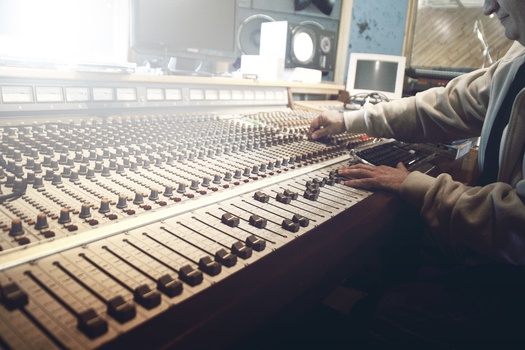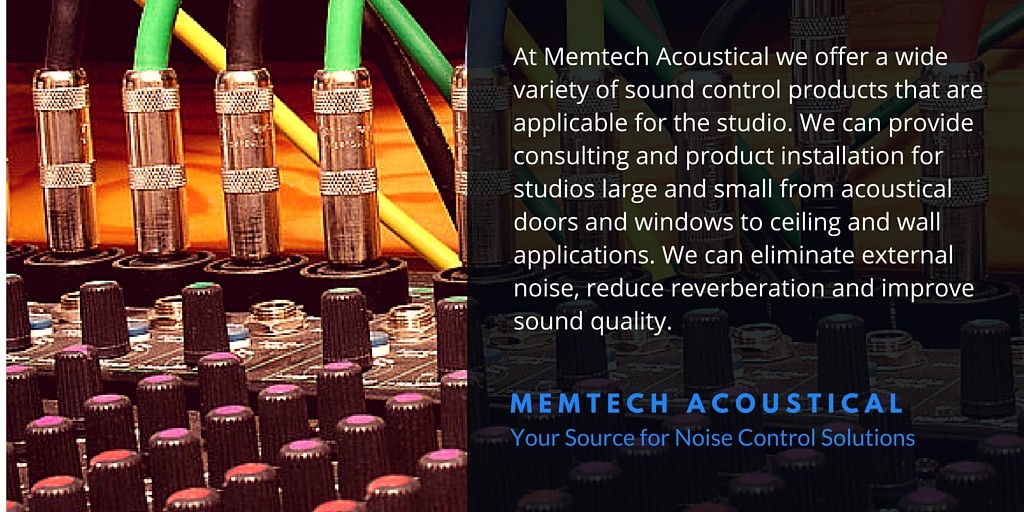How do Sound Engineers begin to construct a room acoustically?
This is the first thing that a sound engineer needs to consider before using the space as a Post-production room. Some problems cannot be solved by room treatment alone.
Here are some.
Room Dimensions – If possible, do not use a square room for any serious audio work. Squares result in the worse case in room mode resonance – a phenomenon where some frequencies become louder than others. Build a room that falls in to Bolt’s ratio for room modes, or otherwise, get a rectangular room.
Wall Material – Are the left and right walls made out of different material? This can pose a problem. It would mean that sound reflected of these walls will be different – because different materials absorb different frequencies. It will affect the way a sound engineer uses EQ and panning severely. Unless you intend to pad up all the walls, pick a room with that uses the same material for side walls.
Sound Isolation Issues – You cannot work in a room where there is a high noise level outside, or there is the presence of mechanical equipment with humming noise. Do your best to remove sources of noise, and improve sound isolation if necessary?
Is it vital for Sound Engineers to take note of the position of each speaker?
For sound engineers, listening is of utmost priority. So, speaker placement is crucial because that’s where all the sound is coming from. Bad placement of speakers can completely undermine your work. Let’s go through some steps to see where speakers should go before you apply acoustic treatment.
Length, not Breadth – Make sure that if your room is a rectangular shape, the speakers are at one end of the length of the room, not the breadth. We need as much distance as possible from the speaker to the back wall to prevent back reflections from affecting where the sound engineer is sitting.
Do not flush – Do not flush the speaker against the wall, as this will cause reflection and phase cancellation problems when the sound reaches the sound engineer. Leave some distance between the speaker and the front wall.
Distance from the wall – Even if you leave some distance between the speaker and the front wall, make sure that they are not of the same multiple. For example, if the distance from the front wall is 1m, do not have the distance on the sidewall to be 2m, 3m. Have it slightly in between to reduce resonance issues. Also, keep the distance from the side walls the same.
Listening Position – With regards to the listening position, the sound engineer should sit at about 38% the length of the room from the front wall.
Equilateral Triangle – The distance between the 2 speakers, as well as between each speaker to the sound engineer’s head form an equilateral triangle. Make sure all the lengths are the same.
How to treat any Early Reflections?
Monitoring speakers are supposed to give an accurate representation of a sound engineer’s work. We have done our best to make sure that they are in the best place possible. However, without proper acoustic treatment, sound can become affected in serious ways via early reflections.
Early reflections are the first few bounces of sound waves after sound leaves the speaker and makes it to the sound engineer’s ears. Since they are “copies” of the original sound and are not in phase, they result in something called the comb-filtering effect – which means parts of the sound are cancelled out when the sound engineer hears them.
This means that there are frequencies that are not heard accurately – EQ decisions cannot be translated well to another speaker elsewhere. To fix this, we need to put absorbers on walls that cause early reflections. The sound engineer should be sitting in a “reflection-free zone”. This means that the sound engineer should mainly hear sound from the speakers, not the walls.
Here are some early reflection points:
Side Walls – This is the first point to place an absorber panel. Sound from the speaker will hit the sidewall first, so you need to find out the exact point where this happens. Have the sound engineer sit in the listening point, and have someone hold a mirror while walking down the length of one side of the room, say the left side. There will be a point where the sound engineer can clearly see the speaker. This is the first reflection point from the left speaker to the left wall. Mark this point.
Don’t just stop there. Let the assistant continue to walk down the length of the room. There will be another point where the sound engineer can see, this time – the right speaker. This is the first reflection point of the right speaker from the left wall. Mark this point. Repeat this process for the right wall. You should end up with 4 marked points. Place absorber panels on these points to address stop early reflections from them.
Back Wall – Sound energy can also bounce of the back wall in a similar way. Add a diffuser panel at the back of the wall to disperse potential reflections from returning back to the sound engineer.
Ceiling and Floor – The ceiling can also be a reflection point. There is no way to use the mirror method here, so a general placement would suffice. For the floor, using a rug or carpet can absorb potential early reflections.
For more articles check out our blog:
http://www.soundzipper.com/blog/
Article Source: http://EzineArticles.com/expert/Jordan_Chia/1879225
The major benefit of an acoustically sound broadcasting or recording studio is the ability to capture optimal sound during recording. Memtech Acoustical has creative, cost effective solutions to assist you in creating a paramount recording environment.



